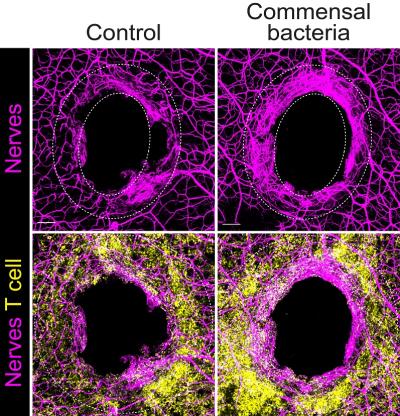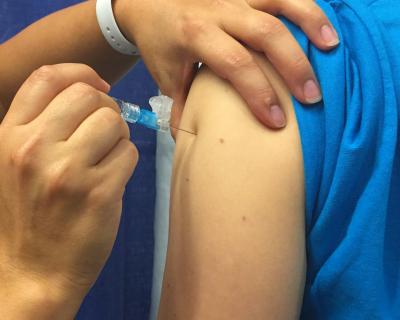When healthy people in the same age range are immunized with the same vaccine, some people’s immune systems make substantially more protective antibodies than others. Scientists want to figure out why some people respond to vaccination better than others.
Investigators have identified predictors of a robust antibody response to a few specific vaccines, such as those for influenza, yellow fever, and hepatitis B. Until recently, however, scientists did not know if there was a common predictor of a potent antibody response to most vaccines. If one does exist, researchers reasoned, perhaps it could guide the development of new strategies to enhance the antibody response to vaccination. This would be especially helpful for infants, older adults, and immunosuppressed individuals, who do not always mount an effective immune response to vaccines.
In pursuit of this goal, researchers associated with the NIAID-funded Human Immunology Project Consortium (HIPC) examined immune responses from the blood of 820 healthy adults ages 18 to 55 years before and after they received a shot of one of 13 different vaccines against 11 different pathogens. These vaccines collectively used six different approaches, or platforms, to generate an immune response. The investigators looked for patterns of genes that were turned on, or expressed, in immune cells before vaccination in people who made high, medium, or low levels of antibodies after vaccination. The scientists found that people who had gene expression patterns associated with inflammation before receiving a shot made the highest level of antibodies. The findings were published in the journal Nature Immunology.
Now, researchers want to figure out how to safely induce this level of inflammation and learn if doing so on the day of immunization helps people generate a stronger antibody response to a pathogen than would be expected otherwise.
A caveat to the findings from this study is that the predictive patterns observed in younger adults did not hold up when the researchers applied them to the small number of study participants ages 50 and older. It’s unclear whether other gene expression patterns would predict the antibody response to vaccines in older adults or in children, who were not included in the study. HIPC-affiliated investigators are seeking an answer to this question.
In related research, NIAID-funded HIPC investigators examined immune responses from the same 820 adults who received one of the 13 different vaccines in the earlier study, but this time, the blood samples were drawn over a period of 21 days after vaccination. The researchers looked for a similar pattern of gene expression among all the participants after immunization that could predict the strength of the antibody response several weeks later. Initially, no common pattern appeared for all 13 vaccines. However, when the investigators adjusted the data to synchronize the timing of expression of specific genes, they did find a predictive pattern. The activation and replication of precursors of antibody-producing B cells predicted a robust antibody response to immunization. These findings, also published in Nature Immunology, indicate that after making a time adjustment, scientists can look at gene expression to accurately forecast the magnitude of an individual’s antibody response.
Notably, these two studies do not account for other aspects of the immune response that may be important for vaccine protection, such as the variety of molecules to which the antibodies bind, the strength of antibody binding, and the T-cell response.
The published and ongoing research reported in the two studies described here is possible because data from numerous clinical trials of more than a dozen different vaccines was shared, standardized, and pooled to answer broad questions about immune responses to vaccines.
The National Institutes of Health Data Management and Sharing policy requires scientists to describe how they will plan to preserve and publicly share data from research funded by or conducted at NIH. Data from the two studies and publications described here is available at www.ImmPort.org, a NIAID-supported data repository that provides access to NIAID-funded research findings. Adherence to the NIH Data Management and Sharing policy and ease of access to shared data will accelerate the pace of biomedical research, enable the validation of research results, and ensure optimal use of high-value datasets.
References:
S Fourati et al. Pan-vaccine analysis reveals innate immune endotypes predictive of antibody responses to vaccination. Nature Immunology DOI: 10.1038/s41590-022-01329-5 (2022).
T Hagan et al. Transcriptional atlas of the human immune response to 13 vaccines reveals a common predictor of vaccine-induced antibody responses. Nature Immunology DOI: 10.1038/s41590-022-01328-6 (2022).




